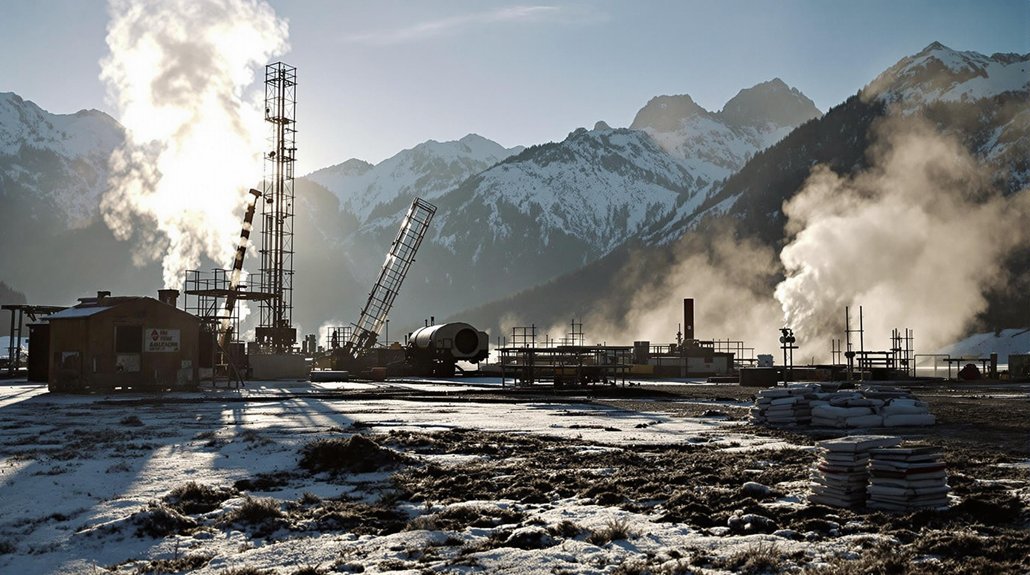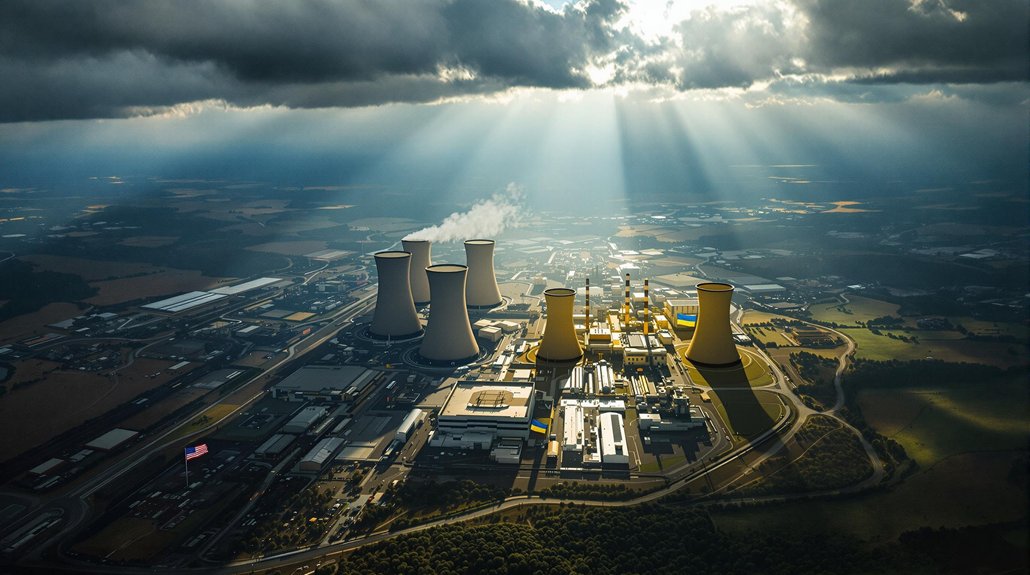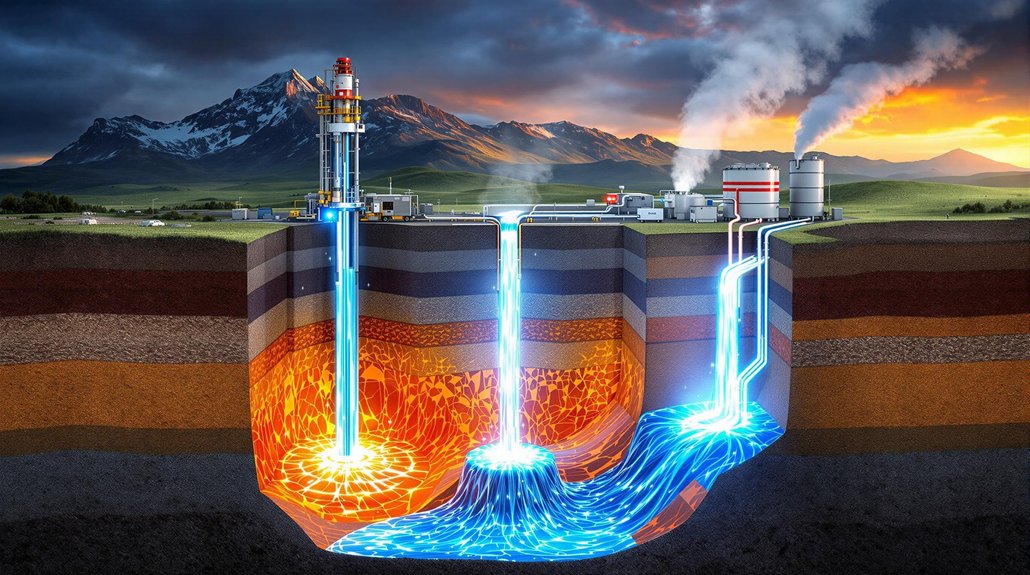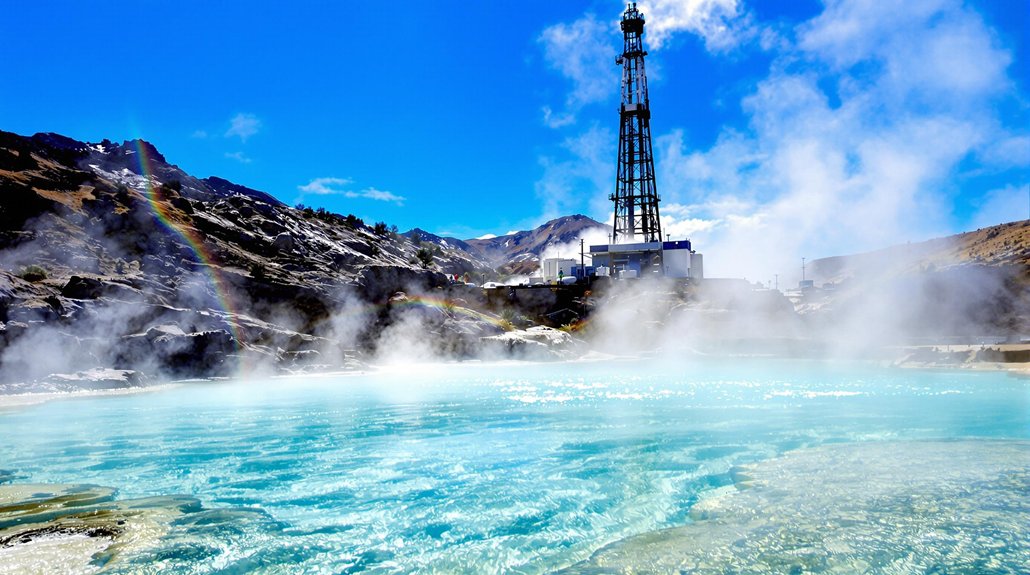Europe’s geothermal potential remains largely untapped despite its impressive 96% capacity factor. Bureaucratic roadblocks stretch permitting to 7 years while regulations differ wildly between countries. Financial institutions shy away from drilling risks, and technical challenges persist in hard rock environments. Annual growth has flatlined at a measly 2% since 2019. Meanwhile, other renewables get the spotlight and investment dollars. The sleeping giant of European energy awaits someone to finally wake it up.
While European leaders talk big about clean energy shifts, the continent’s geothermal sector is stuck in first gear. Despite having 3.5 GW of installed capacity and over 130 district heating systems, geothermal energy provides a measly 0.2% of EU electricity. Growth has crawled to just 2% annually since 2019. So much for revolutionary change.
The bureaucratic maze is suffocating progress. Permits take 5-7 years—longer than some political careers. Meanwhile, regulations differ wildly across member states, creating a patchwork of confusion that would make Kafka proud. Authorization procedures? Complex. Geological data sharing? Insufficient. Standards? What standards?
Money is another headache. Banks don’t like uncertainty, and drilling holes miles into the earth comes with plenty of that. Failed explorations mean lost millions with no return. Low electricity prices don’t help the business case either. And while other renewables get the spotlight, geothermal companies struggle to catch investors’ attention.
Drilling for steam? Try drilling for investors first—the real rare resource in Europe’s geothermal sector.
Technical challenges persist too. Hard rock drilling techniques need work. Electronics melt at high temperatures. Surprise! And compared to solar and wind, R&D funding is pocket change. Despite these challenges, geothermal energy achieves a remarkable 96% capacity factor compared to other renewable options that depend on weather conditions.
Politicians aren’t exactly losing sleep over geothermal’s potential. Most couldn’t tell you the difference between a megawatt and a megabyte. Public perception isn’t helping—nobody wants a drilling rig in their backyard, and rare incidents of minor earthquakes send communities into panic mode. The industry’s lobbying power? Practically non-existent compared to fossil fuel giants.
There are glimmers of hope. The revised EU Renewable Energy Directive raised targets. Some countries have drafted roadmaps. There’s talk of an EU-wide insurance scheme for drilling risks. Geothermal even got a mention in the Critical Raw Materials Act. But talk is cheap. Tourism experts like Susanne Becken have emphasized that sustainable energy adoption is critical for mitigating climate change impacts in popular European destinations.
For now, Europe’s geothermal revolution remains more fiction than fact. All that potential energy, just sitting there underground, waiting for bureaucrats to wake up. The failure rates for exploration wells vary drastically, from under 10% in Hungary to a concerning 30% in the Netherlands.








